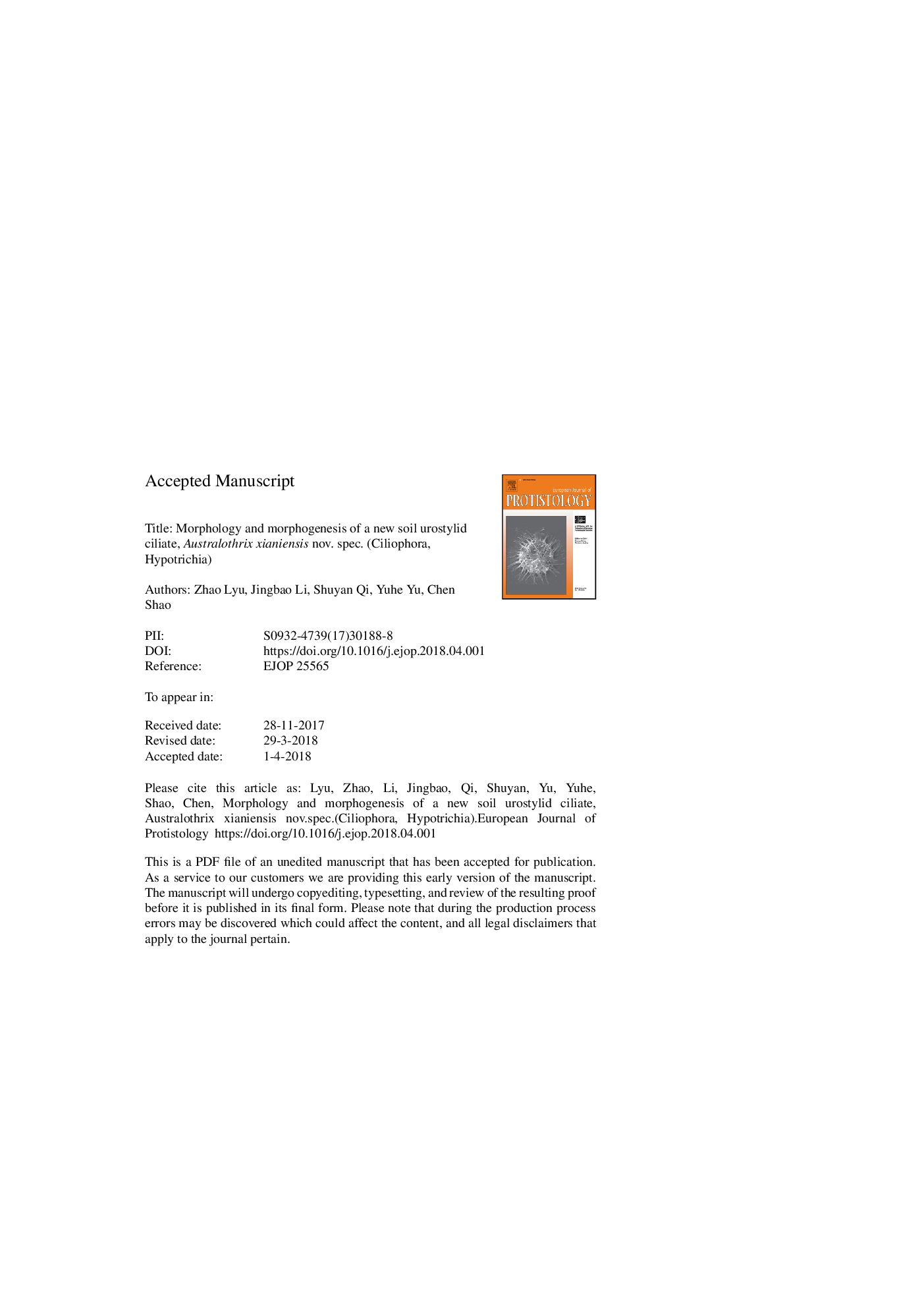| Article ID | Journal | Published Year | Pages | File Type |
|---|---|---|---|---|
| 8382432 | European Journal of Protistology | 2018 | 18 Pages |
Abstract
The living morphology, infraciliature and morphogenetic events of a new soil urostylid ciliate, Australothrix xianiensis nov. spec., collected from Chanba National Wetland Park in Xi'an, China, were studied in vivo and after protargol preparation. Australothrix xianiensis nov. spec. is characterized as follows: about 190-240â¯Ãâ¯40-60â¯Î¼m in life; body pisciform and dark; cortical granules arranged in longitudinal rows on both sides, colourless, rod-shaped and about 2â¯Ãâ¯1â¯Î¼m in size; single contractile vacuole slightly ahead of mid-body with two long collecting canals; macronuclear nodules scattered throughout cytoplasm; adoral zone occupies about 20% of body length, composed of about 32 membranelles; three frontal cirri and one buccal cirrus; two to four midventral pairs and four or five midventral rows, one left and two right marginal rows; four or five dorsal kineties; four or five caudal cirri. The main features of divisional morphogenesis are: (1) each posterior streak generates a midventral row together with the midventral pair; (2) the old adoral zone of membranelles is retained with the exception of the posterior part, which is renewed in situ; the undulating membranes are completely renewed; (3) parental cirri do not contribute to the construction of the oral primordium in the opisthe in very early dividers; (4) two sets of frontoventral cirral anlagen are formed.
Keywords
Related Topics
Life Sciences
Agricultural and Biological Sciences
Agricultural and Biological Sciences (General)
Authors
Zhao Lyu, Jingbao Li, Shuyan Qi, Yuhe Yu, Chen Shao,
